2020 annual report
Kelowna, British Columbia, Canada
For the year ended December 31, 2020



For the year ended December 31, 2020


As the global pandemic reached our community last March, it became clear that 2020 would be a uniquely challenging year. And while it was indeed a challenging year on several fronts, we did not falter and never lost sight of recovery and how our community would look beyond the pandemic.
We faced the unique challenges head-on, shifting the way we do business to adapt to public health orders by providing new ways to access our services online, adjusting our recreation services to ensure participant safety and expanding patio access on Bernard Ave for the summer to accommodate more pedestrians and cyclists. Throughout the year, a strong sense of compassion emerged in our community –we encouraged and supported one another, whether during the nightly cheers to front-line workers or encouraging the community to shop local. Even when circumstances tested our resolve, we remained flexible and innovative and as a result, we are positioned to come back stronger than ever.
Thank you, Kelowna, for taking care of one another throughout 2020 and beyond.
Despite uncertainty and financial challenges, we stood by our proven financial principles and strategies to help us weather the storm and position ourselves for recovery. We continued to be agile and unafraid to do things differently to ensure we kept pace with the growth of our community and continued to provide the essential services expected of us.
I am happy to report that we were able to advance several projects within each focus of the Council Priorities 2019 – 2022, which supports the vision of Imagine Kelowna and the work we need to do to bring this vision to reality.
Kelowna continues to be a city that people want to call home. Our population grew by almost two percent in 2020 and real estate sales remained high throughout the year. UBC Okanagan is investing in downtown Kelowna with plans for a mixed-use development including both academic and office space, and university rental housing. Private sector businesses have signaled that Kelowna is where they want to be, with significant investments and expansions such as the opening of a new national call centre, bringing more jobs to our local economy. We have anticipated this growth, expecting to welcome upwards of 45,000 new residents to our community by 2040 and have already begun the necessary plans to accommodate this population growth.
Through the 2020 Citizen Survey, residents told us just how much more they were using outdoor spaces and parks. In 2020 we made improvements to Boyce-Gyro Park and started on the final phase of Rutland Centennial Park. On the transportation side, we endorsed the first ever Regional Transportation Master Plan, which will help build and maintain a healthy, thriving and connected future for the Central Okanagan, extended the Ethel active transportation corridor, and are now in the final phases of the Transportation Master Plan and Official Community Plan.
In response to the COVID-19 pandemic, the Regional Mayors’ and Westbank First Nation Chief’s Recovery Task Force was launched in April 2020. The task force, co-chaired by Regional Board Chair Gail Given and myself, continue to communicate as One Voice to support the immediate needs of local business and drive for full economic recovery in the Central Okanagan. We provided our communities with a forum for identifying economic recovery needs, advocated for stimulus program funding for Central Okanagan businesses and their employees and continue to identify available areas for collaborative projects to support economic recovery.
Our advocacy work helped secure $15.2 million in Safe Restart Grants for the City of Kelowna ($7.9 million) and Kelowna Regional Transit System ($7.3 million) from the federal and provincial governments. The city-designated funds helped cover additional costs and revenue losses from areas such as gaming revenues, and allowed us to support essential services, including helping the Kelowna International Airport through a 64 per cent decline in air travel. The funds for the Kelowna Regional Transit System will help cover the costs of lost revenue and additional expenses to improve safety and comfort for transit staff and customers.
Further advocacy to address the unique needs of local governments is being advanced by the B.C. Urban Mayors’ Caucus. This group, co-chaired by Victoria Mayor Lisa Helps and myself, has begun productive conversations with the Premier and his ministers on key priorities for our communities –mental health, substance use and treatment, affordable housing, public transit, and a new fiscal relationship between the province and municipalities.
Despite an incredibly challenging year, our community has demonstrated its progressiveness, vibrancy and entrepreneurial spirit. Our economy has remained strong, our unemployment numbers are better than pre-COVID, and we remain one of the most beautiful places in the world to live. The challenges we’ve faced have only served to connect us even more as a community and I firmly believe that better days are ahead.
Mayor Colin Basran City of Kelowna


What a year to reflect upon. In one of the most interesting years I can remember, we navigated new and unprecedented challenges that required quick and prudent decision making, adaptability and resolve. As I had hoped and anticipated, our strong financial management practices, our ability to pivot and our passion to innovate has seen us grow and continue to serve our citizens, despite the challenges the COVID-19 health crisis brought with it. We continue to rely on the solid foundation that served us well in 2020 and that I know will do so in the years to come as we build back better and stronger.
As the global pandemic began to unfold, we acted quickly to support our community, keep residents safe and help support businesses where we could. We set up staff to work from home and dramatically altered work conditions for staff who needed to be on site, ensuring they could safely continue to keep City business moving along and provide the essential services that our community relies on from us.
In a crisis, decision-making is often immediate, short-term and responsive. Having strong plans and strategies helps shift our perspective back to being longer-term and proactive so we don’t lose sight of the other things that are important. These are the goals in our Imagine Kelowna community vision; long-term plans that guide land-use, infrastructure investments, community safety, social issues, and culture; and encompass several of our Council’s Priorities for their 2019 – 2022 term.
Our second progress report on Council Priorities 2019 – 2022 highlights the significant progress we made despite the added weight of the health crisis and will inform our planning through the recovery stage. It is also a level of transparent public reporting that I think our community wants and deserves.
Through ongoing support of Journey Home, Kelowna’s communitybuilt strategy to address homelessness, we have seen the Strategy meet its goal of 300 units of new housing with supports for our community, 139 of which were opened in 2020. The next two important pieces of this challenging puzzle which are currently being worked on are the Community Safety Strategy and housing and support for those with complex needs. Significant progress is being made with senior government partners and stakeholders on both of these key objectives.
We continue to make strategic investments in acquisition and development of parks, whether it is through direct land purchases or through the Parks Development DCC program which was introduced in 2020. Currently, 91.2 per cent of Kelowna residents live within 400m of a park – and we know that park spaces are important to our residents, even more so during the pandemic, as 48 per cent of residents told us that they increased their use of park and outdoor spaces in 2020.
One challenge we continue to face is our city’s housing affordability. The population statistics and real estate numbers from 2020 indicate that growing numbers of people want to live here and with that demand comes higher prices. So, we continue to work with partners to create incentives and process efficiencies that will increase supply and stabilize prices. This also includes supplying diverse housing options for people of all ages and economic status.
The 2020 Annual Report tells the story of an unusually challenging year but demonstrates the resilience, financial transparency and the accountability that is expected of us. Within this document, I invite you to learn more about the initiatives completed by our dedicated staff and the steps we continue to make towards recovery while remaining a safe, inclusive and thriving city.
We met the challenges of 2020 head-on while remaining steadfast and confident that the work we do creates value for the tax dollars we collect. We were innovative, worked as a team and led responsibly to make things better.
As a result, I am optimistic that Kelowna is well-positioned to make a strong recovery from the fallouts of the COVID-19 health crisis and that we truly have an opportunity to create a city of the future as envisioned in Imagine Kelowna.
Doug Gilchrist City Manager, Kelowna
We acknowledge that our community is located on the traditional, ancestral, unceded territory of the syilx/Okanagan people.
Kelowna is located along the beautiful shores of Okanagan Lake, in the heart of the stunning Okanagan Valley. With a four-season lifestyle, the lake offers opportunities for boating, swimming or fishing, while nearby mountains attract hikers, skiers and outdoor enthusiasts. From scenic golf courses to bustling urban centres with delectable restaurants, awardwinning wineries and breweries, local shopping, museums, live entertainment and cultural festivals, residents and visitors enjoy it all in Kelowna.
Nearly all citizens (92 per cent) rate the quality of life in Kelowna as good or very good thanks to active/ recreational opportunities, safety, its accessible location, job opportunities, stunning landscape and the great weather.
The technology sector has seen us dubbed as the Silicon Valley of the north and is a pillar of the regional economy. Dynamic tourism, post-secondary education, construction, real estate, healthcare and deep-rooted agriculture sectors are drivers of our economy.
As a highly desirable place to live, Kelowna remains one of Canada’s fastest growing cities. By 2040, we expect a growth of more than 45,000 new residents who will call Kelowna home.

The City of Kelowna is open to opportunities, open for business and open to new ideas from our diverse residents. Circumstances of a very challenging year tested our community and we demonstrated our resilience, compassion and resolve. Throughout the COVID-19 pandemic, the City continued to deliver the essential services our residents rely upon every day and adapted our processes to minimize interruptions in day-to-day business and services to residents.
The organization is led by our dedicated City Manager, Mayor and Council. More than 1,000 employees deliver quality services to ensure our City is safe, vibrant and sustainable. A fiscally responsible municipality, the City provides core
services, maintains existing infrastructure and builds new amenities when needed.
The public is kept informed of City projects and progress through an array of publications, social media channels and the user friendly and mobile responsive kelowna.ca website which allows residents to place service requests online and stay informed. Citizens can also provide input and be involved on key projects through the City’s online engagement platform getinvolved.kelowna.ca. Engaged citizens help build strong neighbourhoods and create a city that is welcoming and inclusive.
The City of Kelowna is governed by an elected Mayor and eight Councillors for a four-year term (2018-2022). Led by Mayor Colin Basran, Kelowna City Council is committed to building on the momentum of past Councils and being open for opportunity through community engagement and partnerships. It is consistent and transparent in decisions,





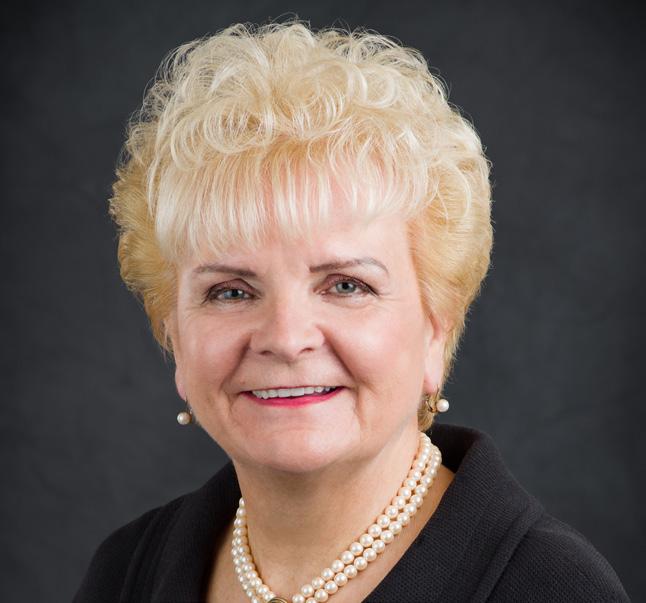



creating a favourable environment for customer service, development and business in Kelowna. Council meets regularly and the public is welcome to attend any open meeting or provide feedback in writing via mail or email.
kelowna.ca/council
The 2020 City of Kelowna Citizen Survey gauged public satisfaction with municipal programs and services, providing insight into citizens’ service priorities.
46th Annual Civic & Community Award Recipients
Honouring individuals and organizations for outstanding contributions and achievements in 2020 that directly benefited the community, making Kelowna a great place to live, work and play.
Throughout the month of April, finalists of the 46th Annual Civic and Community Awards have been celebrated online with winners announced each Monday in Council Chambers in lieu of an evening gala.
rolli cacchioni
Anita Tozer Memorial Award
elaine mcmurray
Sarah Donalda Treadgold & Fred Macklin Memorial Award –

Citizen of the Year
columbia bottle depots Champion for the Environment
peter’s your independent grocer
Corporate Community of the Year
karma lacoff nieoczym
Honour in the Arts
julius brooker
Teen Honour in the Arts
tian whitehead
Young Citizen of the Year
meghan faust
Bob Giordano Memorial Award –
Volunteer Coach or Sport Administrator of the Year
meals on wheels –
central okanagan region nutrition society
Central Okanagan Foundation –

Volunteer Organization of the Year
Nominations were not accepted in 2020 in the Male and Female Athlete of the Year, High School Athletes of the Year and Athletic Team of the Year categories due to the impact of COVID-19 on team and competitive sport seasons. Any nominees submitted in these categories in 2020 will be carried over to the 2021 awards program and combined with nominations from this year.
The City of Kelowna received a number of awards and recognition in 2020 including:
government finance officers association
canadian award for financial reporting
2019 Annual Report
This is the 18th consecutive year the City has received the award recognition excellence in governmental accounting and reporting.
government finance officers association
distinguished budget presentation award
2020 Financial Plan
This is the 19th consecutive year the City has received the highest form of recognition for governmental budgeting.
age friendly bc recognition grant
BC Ministry of Health
Grant valued at $15,000 for transit marketing and programming.
bc active transportation infrastructure grant
Awarded $500,000 to support the extension of the
Ethel Street Active Transportation Corridor from Springfield Road to Raymer Avenue.
top 50 government fleet
Government Fleet Magazine, sponsored by Ford
The City of Kelowna was one of only five Canadian municipalities named to the top 50.
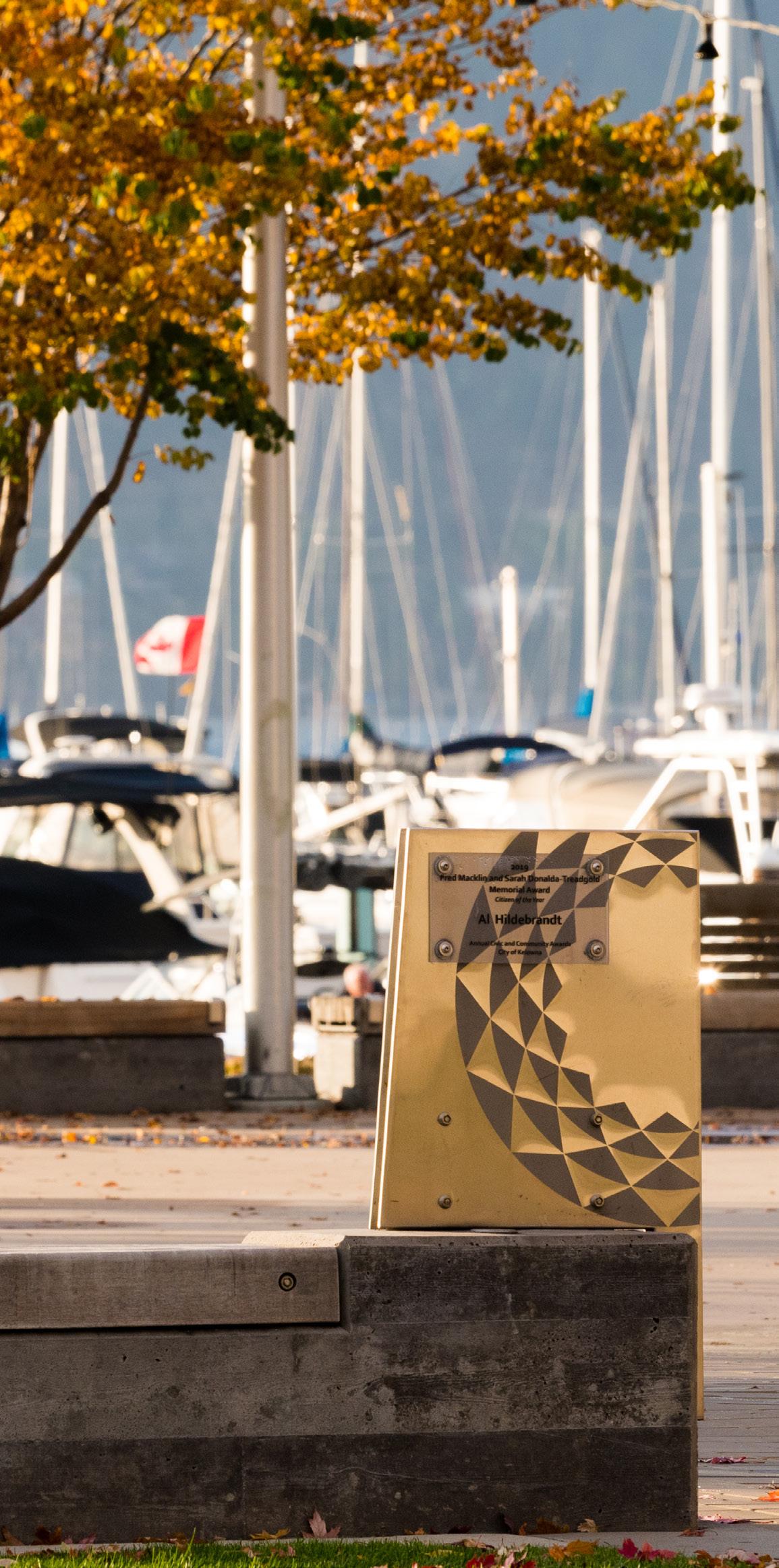
Financial Reporting for Canadian Award
Presented to City of Kelowna
Text38: British Columbia
tree cities of the world recognition
United Nations and Arbor Day Foundation
The City of Kelowna was named one of 120 Tree Cities of the World for 2020.
wow (widening our world) award
Community Living BC
Award received for staff efforts to maintain connection and recreation to the City’s DiverseAbilities client group during COVID-19 recreation facility and programming closures and interruptions.
For its Annual
Financial Report for the Year Ended
December 31, 2019
Executive Director/CEO

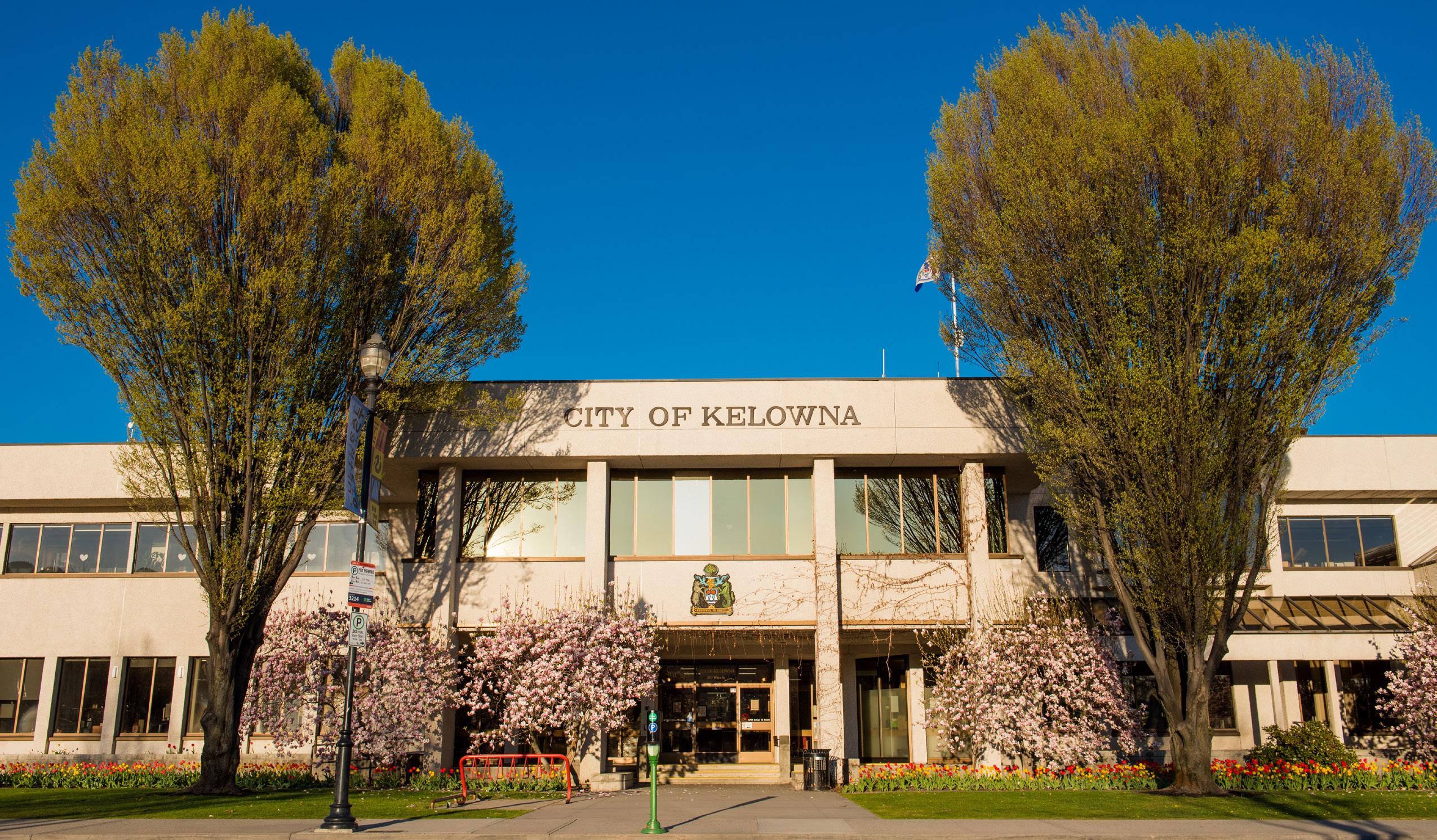

Council Priorities 2019-2022 identifies the strategic shifts, improvements and changes that are important to Council, the community and organization. It is an open and accessible commitment to how we will advance the Imagine Kelowna vision within this Council’s term. It will focus the work we do to become the Kelowna residents told us they want to see. Reporting on its progress each year is part of Council’s commitment to working in a way that is citizen focused, balanced and embraces continuous improvement. The interactive progress report can be found at kelowna.ca/councilpriorities
The ability to acquire and manage a portfolio of financial and physical assets that meet the current and future needs of our community. Read more about our Financial Management Strategies on page 33.
financial strategy financial principles plans that influence financial decisions
• Assets – New
• Assets – Renew
• Debt
• Development Financing
• Sufficient
• Pragmatic
• Council Priorities

• Official Community Plan
• Imagine Kelowna vision
• Grants
• Operations
• Partnerships and Enterprise
• Property Taxation
• Flexible
• Transparent
• 10-year Capital Plan
• 2030 Infrastructure Plan
• 20-year Servicing Plan
• Reserves and Surplus Funds
• User Fees and Charges
• Balanced
• Community Trends Report
In early 2020, our community watched and listened as we were introduced to a flu-like virus called the new coronavirus. By February, the virus had been named COVID-19 and on March 11, it was declared a pandemic by the World Health Organization.
Shortly after, strict physical distancing measures were implemented by the Provincial Health Officer with gatherings of more than 50 people prohibited and sit-in restaurants, bars and casinos ordered to temporarily shut down. Closure of personal service businesses such as hair salons and tattoo shops, were next. School was cancelled for students from kindergarten to grade 12, travel restrictions were implemented and a public health emergency was declared by the Provincial Health Officer.
Throughout the remainder of the year, residents navigated the ups and downs of the pandemic, with gradual re-openings and easing of restrictions followed by the closures and reimplementation of restrictions, the ‘bending of the curve’ to an increase in COVID-19 cases. It was an uncomfortable year for all of us, affecting every individual in our community in many different ways.
Through it all Kelowna residents demonstrated their resolve, following Provincial Health Orders, demonstrating appreciation for the dedicated and selfless front-line workers in our community and innovating in so many different ways, with signs of support appearing in windows, painted onto rocks and chalked onto sidewalks. The community came together to take care of one another…while we stayed apart.
The accomplishments of 2020 serve to highlight what residents asked of us through Imagine Kelowna – that we need to be agile, resilient and unafraid to do things differently based on four principles: connected, collaborative, responsible and smarter. While no one could have predicted the context in which we were required to do this in 2020, in the midst of a pandemic, we can look back with pride on the actions and investments made in 2020 in the spirit of Imagine Kelowna.
Early on, we made it our priority to maintain essential services and keep our community safe. We continued to invest in important projects that would make a difference for our residents, taking into account the community’s Imagine Kelowna vision while also delivering on the 2019-2022 Council Priorities and providing the first report back on Council priorities for activities and initiatives that took place in 2019.

While the City did feel the effects of reduced budgets, partially due to recreation and cultural facility closures, we remained committed to providing the daily essential services expected by our residents including community safety, great urban spaces, diverse transportation options and environmental response.
Imagine Kelowna is a vision to 2040 and in 2020 we began to report out on the strategic long-term actions to help get us there. This included the launch of the 2020 Action Plan which outlined close to 100 projects and significant actions across all City divisions to deliver results aligned to Council Priorities. The annual Action Plan further demonstrates the City’s commitment to strategic planning, clear direction and transparency.
Community safety represents the largest operating budget investment for 2020 at $39.8 million. Bolstering safety resources, Council approved the addition of 11 new RCMP officers as well as 14 safety-related civilian support positions – totaling $1.4 million.
In addition to investing in personnel, we also invested in training and new programs. Eleven people were trained to perform Crime Prevention Through Environmental Design (CPTED) audits which look at ways to reduce the risk of crime through urban design including things like improved sight lines, appropriate lighting and neighbourhood beautification. We worked to address problem properties with the introduction of a Property Standards Compliance Team. The team brings together City of Kelowna Bylaw, Building Services, Planning and Development, Kelowna Fire Department, RCMP and other agencies to address potentially unsafe or illegal properties where there may be unsafe living conditions or suspected criminal activity
As part of our Intelligent City initiatives – innovative partnerships and collaborative efforts to find ways to improve the lives of residents through access to online services, technological innovation and collaborative problem-solving –the CCTV Registry Pilot Program was launched in partnership with the Kelowna RCMP and Downtown Kelowna Association (DKA). This voluntary registry records the location of business security cameras within the boundaries of the DKA to provide Kelowna RCMP with quicker access to potential sources of video evidence.
Through the year, particularly during the busy summer months, the City stepped up patrols in the community with RCMP/ Bylaw bike teams and the Safety Education Ambassadors of the City and the DKA. Through a coordinated approach among enforcement, health and social agencies, combined with the active participation of visitors and residents – especially during the COVID-19 pandemic –the goal was to ensure that our community remained a safe place for all to live, work and play.
Council endorsed the development of a Community Safety Plan proposed to generate shared ownership, vision and action among the range of government ministries and community organizations critical to community safety. The planning process will engage community stakeholders, partners and Kelowna residents in order to identify and validate community safety issues and priorities as well as develop new ways to measure, monitor and report progress.
Outside of the COVID-19 pandemic, it’s impossible to review 2020 without including the #BlackLivesMatter movement and the community response to police brutality, racial injustice and the public discourse that followed about systemic racism across almost all institutions, not only in the United States, but in Canada and all over the world.
In advance of a #BlackLivesMatter rally to take place in Stuart Park, Mayor Colin Basran stated, It is abhorrent to me and my Council colleagues that people experience racism in Kelowna and we stand with everyone committed to identifying how we can make positive change for Black men and women… and by extension, people of colour and Indigenous Peoples.

Council heard through the Imagine Kelowna engagement that our citizens want to live in an inclusive city, where we increase diversity and create an environment where all people feel safe and respected. That’s why our Council has made inclusiveness an essential priority for years to come.
I thank everyone who joins the peaceful rally tomorrow for Black Lives Matter to help move us toward the society we want to be.
In partnership with Urban Matters CCC and PEOPLE Employment Services, the City received funding from Health Canada to establish a peer navigator program for community
social-serving organizations. The program, launched in 2020, provides employment opportunities and supports people experiencing a variety of vulnerabilities, including those with lived and living experience of homelessness and/ or substance use. This project will develop and implement a peer navigators’ program designed to support the training of people with lived and living experience of substance use to participate in social-serving organization’s delivery of services. The aim is to increase the participation of people with lived experience into supporting peers in their navigation of services. Through this project the capacity of local organizations to meaningfully incorporate people with lived experience into their service delivery will be increased, along with the introduction of peer-to-peer Indigenous cultural teachings to support healing and wellness.
The City continues to support initiatives to address homelessness in our community and in 2020, endorsed a Memorandum of Understanding (MOU) between the City and the Journey Home Society to support the implementation of the Journey Home Strategy – Kelowna’s community-built plan to address homelessness. The MOU is designed to support the Society as they build their capacity and continue to grow and evolve and increase their sustainability as an independent organization.
It was a busy year for active transportation corridor (ATC) improvements, including the completion of the ATC on Ethel St., from Springfield to Rose Ave and beginning the final phase from Rose Ave to Raymer Ave. Bike lanes were added on Union Rd, Kneller Rd, Ellis north of Clement and improved safety for cyclists with buffered bike lanes along Richter St., south of K.L.O.
A good transportation network is one that is safe, costeffective and sustainable – all elements that were explored in Kelowna’s Transportation Master Plan (TMP), expected to be completed by the end of 2021. As part of the strategic planning, the Regional Transportation Plan (RTP) was completed in 2020, identifying transportation projects and priorities that will help build and maintain a healthy, thriving and connected future for the Central Okanagan. Key recommendations include creating a fast and reliable transit spine along the Highway 97 corridor, adding 81 new kilometres of regional bicycling and trail infrastructure and improving connectivity to regional destinations such as UBC Okanagan and the Kelowna International Airport.
Looking to the future, we partnered with Rogers and UBC Okanagan on a smart city 5G pilot project in downtown Kelowna, using wireless sensors to collect anonymous data on vehicle and foot traffic patterns, which will be used by UBC research students to help ways to improve vehicle, pedestrian and cyclist safety in the area. These wireless devices and their infrastructure follow Infrastructure Canada’s Safety Code 6 – Health Canada’s Radiofrequency (RF) Exposure Guidelines.
In partnership with BC Transit, we began a transit exchange study to identify opportunities to enhance facilities at the Midtown / Orchard Park Exchange, Rutland Exchange, Mission Recreation Exchange, and the Kelowna Airport Transit Station. As part of the study, the City conducted an online public survey to better understand what transit exchange features are important and what could be improved. A feasibility study will then be conducted based on the results with design and construction taking place over the next several years.
The City also reached out to accessible parking users to take a survey and share their experiences using City of Kelowna accessible parking stalls to help us understand more clearly what barriers exist are and what solutions users would prefer.
In 2020, the City experienced reduced infrastructure budgets as a result of COVID-19 but was able to move forward with approximately $70 million in capital projects to improve and maintain outdoor spaces, buildings, active transportation networks, water and sewer, and roads and bridges.
As the city continues to grow, thoughtful and comprehensive urban plans to create complete and strong neighbourhoods is a priority and a result we want to see. As an example, in 2020 the Civic Precinct Plan began to take shape. Progress was made on a key piece of real estate, the former RCMP site, core to the vision of the Plan in Kelowna’s Cultural District. Leasing of this site will support the momentum of the Cultural District and fills the need for more housing options downtown, in addition to delivering new public spaces and amenities to benefit the entire community.
The final phase of engagement for the 2040 Official Community Plan (OCP) launched in 2020, giving residents the opportunity to provide feedback to help refine three major policy areas which include urban centre development and residential infill, stopping sprawl and protecting agriculture, and climate action and environmental protection. The engagement and information process around the 2040 OCP update began in February 2018 and is anticipated to be completed in 2021.
The 2020 Annual Housing Report identified key trends in the rental and ownership housing market and highlighted the ongoing need for purpose-built rental housing to keep pace with Kelowna’s growing population as well as the need for subsidized rentals to ensure rental options are available for all residents. Several housing actions were finalized in 2020, including development of an Affordable Housing Land Acquisition Strategy; development of a Community Energy Retrofit Strategy; and, policy and zoning changes to permit a greater variety of housing forms and tenures.
vibrant neighbourhoods
Enjoy our parks! Upgrades to parks in 2020 included at:
• Boyce-Gyro Beach Park
• Rutland Centennial Park (final phase completed)
• Rowcliffe Park
• Paul’s Tomb trail at Knox Mountain Park
• Sarsons Beach Park
• Glenmore Recreation Park
As part of the Intelligent City Strategy, launched in early 2020, City staff explored solutions to help users connect with important information and services more quickly, easily and conveniently. With the onset of COVID-19 and the need for physical distancing, the City successfully transitioned 20 per cent of its workforce to work from home, avoiding significant interruptions in day-to-day business and services to residents.
Updates to kelowna.ca made it faster and easier to report an issue and request or access services online. Additionally, the City updated its processes so that residents and developers could access, complete, submit and pay for building permit applications fully online. Business license renewals moved to an enhanced online system to better serve customers by integrating business licensing with the existing Property Account system which was previously solely used to pay property taxes and view utility bills.
Council updated the Property Tax Penalty Bylaw to an annual 10 per cent penalty if taxes are not paid by the annual July tax due date. Having one due date penalty of 10 per cent — rather than two, five per cent penalties applied to taxes outstanding after the July due date — is more equitable for taxpayers who pay on time and saves money and staff time.
The Kelowna International Airport (YLW) navigated significant challenges in 2020, with passenger levels decreasing 64 per cent from 2019 (numbers not seen since 1997) due to the COVID-19 pandemic. Early in 2020, YLW had projected to have 2.06 million passengers in 2020, but by April 2020, YLW’s 47 daily flights to 14 destinations had been reduced to nine daily flights to eight destinations. YLW has remained open for essential travel in the region, including connecting patients to necessary medical care, medivac operations, transporting essential cargo to supply businesses and frontline workers, and essential travel for work.
In 2020, YLW opened AirCrew Express, a dedicated screening checkpoint for aircrew, separate from passengers as part of a pilot project to reduce wait times for passengers at the security checkpoint. YLW also continues to identify new potential revenue streams, including commercial development, to help diversify YLW’s revenues that will be reinvested back into YLW. By investing in development of airport lands, YLW will help create jobs, which is one of the ways that YLW directly impacts the local economy.
Our community was fortunate not to experience significant flood or fire events in 2020 but we are all too aware of the realities of climate change. In 2020 action was taken in several areas to address environmental protection and sustainability.
Through a partnership with FortisBC, we were able to retrofit 3,000 decorative streetlights to LED (light-emitting diode), joining the 10,000 streetlights that were switched out in 2019. By moving forward with the decorative lighting retrofit, all streetlights in the City of Kelowna by 2023 will feature LED technology, supporting Council’s priority to decrease greenhouse gas emissions (GHGs) and provide a combined savings of over $1 million per year in electricity costs.
Improving the energy efficiency of homes is one of the ways to meet Kelowna’s GHG reduction targets. To this end, we partnered with FortisBC and the Okanagan Regional Library on the ‘See the Heat’ program, where over 500 residents signed up to borrow a thermal imaging camera from the library to see where heat loss was happening in their homes. They could then use the information to make upgrades, reduce their energy use and heating bills.
The Water System Integration Project was completed in 2020: this $86-million, multi-year project, separates agricultural and domestic water systems in Southeast Kelowna and delivers a sustainable water supply to agriculture in the South Mission. The project brings clean drinking water to about 2,000 households and meets Interior Health’s 2025 clean drinking water mandate almost 10 years earlier than planned in Southeast Kelowna.
In 2020 several projects and strategies that address resiliency and adaptation to flooding, fire, drought and GHG production threats were implemented. Ongoing projects include the Mill Creek Floor Protection Project, Source Water Protection Plan, wildfire fuel breaks, Surface Water Management Plan at the Landfill, flood protection dike work and the Okanagan Lake Foreshore flood impact assessment, in partnership with the Okanagan Basin Water Board. The City has also adapted bylaws, policies and standards to guide staff and City customers to assure the City has infrastructure that includes resiliency to climate change.
The majority of the City’s budget revenue comes from sources other than taxation. Examples of other sources include fees and charges, reserves and grants. On average, over the past several years, taxation is approximately one third of the funding needed for the annual budget, with the remainder coming from those other sources.
2020 was a financially challenging year for many, including the City. The annual budget prioritized keeping the taxation demand as low as possible while ensuring we could maintain essential services and continue to invest in important projects that would make a difference to our residents.
We began to use ModelCity Infrastructure (MCI), a new analysis tool developed to assist staff, Council and the public as they consider long-term infrastructure implications of critical land use decisions. The tool helps evaluate the long-term financial performance of Kelowna neighbourhoods by comparing how much the City spends on long-term infrastructure in different neighbourhoods with the same tax revenue and utility fees collected from those neighbourhoods.
The DCC Bylaw was amended to add a new Parks Development Cost Charge that will fund $104 million in Parks development over the next 10 years.
We continue to look at innovative ways to generate revenue so we can deliver services and improvements while minimizing impact to taxes. This includes exploring partnerships with UBC Okanagan, Rogers, FortisBC and others.

In late 2020, we received $7.88 million in emergency financial assistance through the BC Safe Restart Program. We put over $2.5 million to work mitigating 2020 pandemic impacts such as gaming revenue shortfalls, COVID-19 related spending and to support YLW. The remaining $5.36 million will address a portion of 2021 gaming and other revenue shortfalls and emergency planning and response for 2021.
As part of the City’s commitment to strategic planning and clear direction, Action Plan 2020 outlined close to 100 projects and significant actions across all City divisions to deliver results aligned to Council Priorities.
Reporting back on Council Priorities 2019-2022 in 2020 demonstrated that the majority of our priorities were trending in the right direction, but that there was still work to do. This results-based approach continues to balance the need to provide sufficient direction with the need to allow flexibility to foster innovation and creative solutions, adjust quickly to changes in the community and take advantage of opportunities as they arise.
We remain committed to tracking and reporting on performance measures annually for increased accountability and transparency of the work we are doing to serve the community.
The City has more than 1,000 employees, many of whom provide the essential services we rely on each and every day – the people who monitor and operate our wastewater treatment facility, landfill operators who oversee waste management to keep our city clean, the crews that pave our roads and build new bike lanes, parks staff who conduct daily sweeps of our parks and beaches, bylaw officers who help keep our community safe and orderly, firefighters who answer the call, strong leadership to guide the organization, planners who guide developers through building permits and applications, and the cashiers and accountants who process payments and ensure City finances are managed effectively and transparently kelowna.ca/careers
The City of Kelowna is committed to financial strength and stability. The City defines this as the ability to acquire and manage a portfolio of financial and physical assets that meet the current and future needs of our community. This commitment to excellence was recognized again by the Government Finance Officers Association. In 2020 and for the eighteenth year in a row, the City was awarded the Canadian Award for Financial Reporting and for the nineteenth year, the Distinguished Budget Presentation Award.
The Government Finance Officers Association of the United States and Canada (GFOA) awarded a Canadian Award for Financial Reporting to the City of Kelowna for its annual financial report for the fiscal year ended December 31, 2019. The Canadian Award for Financial Reporting program was established to encourage municipal governments throughout Canada to publish high quality financial reports and to provide peer recognition and technical guidance for officials preparing these reports.
In order to be awarded a Canadian Award for Financial Reporting, a government unit must publish an easily readable and efficiently organized annual financial report, whose contents conform to program standards. Such reports should go beyond the minimum requirements of generally accepted accounting principles and demonstrate an effort to clearly communicate the municipal government’s financial picture, enhance an understanding of financial reporting by municipal governments, and address user needs.
A Canadian Award for Financial Reporting is valid for a period of one year only. We believe our current report continues to conform to the Canadian Award for Financial Reporting program requirements, and we are submitting it to the GFOA.
The 2020 taxation increase averaged 2.05 per cent for all property classes. In early 2020, a new coronavirus, COVID-19, emerged and spread to nearly every country within a few months resulting in the World Health Organization declaring a pandemic. The COVID-19 pandemic is a health crisis without precedent in our recent history and created complex challenges for families, businesses and many other organizations in our community, including the City. To recognize the complex financial challenges faced by our residents, the 2020 Financial Plan was used as one financial response as the City attempted to keep overall taxation as low as possible while still maintaining the services required by the community.
In late 2020, the City received $7.88M in emergency financial assistance through the Government of Canada and Province of BC’s Safe Restart plan and allocated the funds over 2020 and 2021. The portion of these funds that were allocated and spent in 2020, $2.48 million, were used to address emergency planning and response costs, revenue shortfalls at the Kelowna International Airport and gaming revenues which are used to support annual policing costs. The Kelowna Regional Transit System also received a Safe Restart Grant for $7.3 million in late 2020. The City’s portion of this grant was $5.9 million with the balance being distributed amongst the regional transit partners. These funds were allocated over 2020 and 2021 and allowed the City to recover the increased taxation attributed to the Transit program in the 2020 Final Budget, $3.2 million.
The City budgeted to collect a total of $246.3 million in taxation revenues, 60 per cent of which was retained for municipal purposes. The remaining 40 per cent is levied on behalf of other governments and agencies to provide funding for schools, the Regional District of Central Okanagan shared services, libraries, regional hospital, Kelowna business improvement areas, and for BC Assessment to cover the City’s share of costs associated with providing assessment information.
The City has historically relied on pay-as-you-go rather than debt financing for infrastructure needs wherever possible in achieving strategic servicing goals. In 2020, 4.0 cents of each municipal tax dollar collected was budgeted for tax-supported debt servicing programs. Pay-as-you-go capital project funding represented 6.4 per cent of the 2020 taxation requirement.
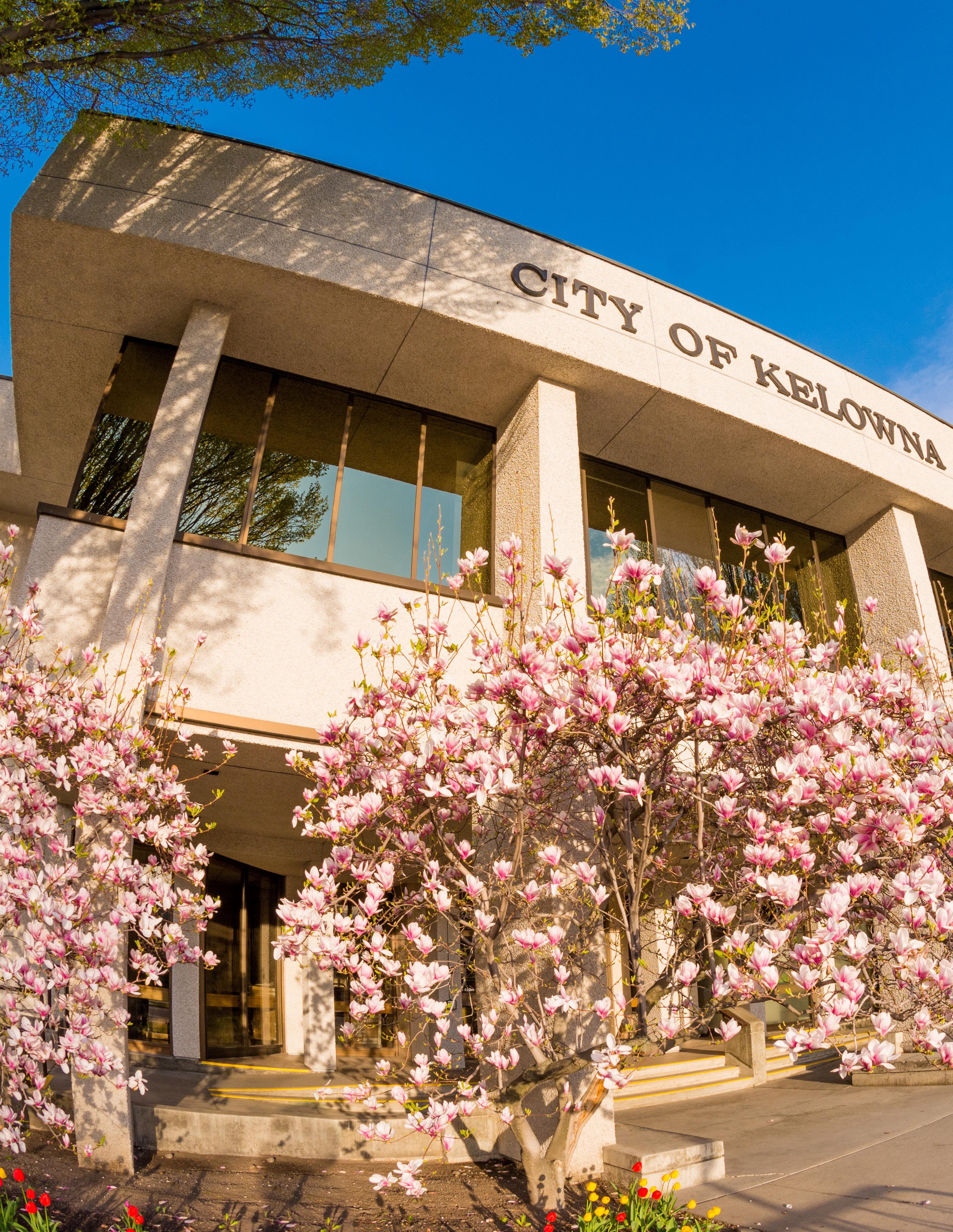
City reserves provide a financial mechanism for saving money to finance all or part of future infrastructure, equipment, and other requirements. Reserve funds can also provide a degree of financial stability, by reducing reliance on indebtedness to finance capital projects and acquisitions, flexibility to leverage opportunities as they arise, or safeguards against extraordinary tax increases.
Development cost charges (DCCs) are fees that municipalities collect from new development to help pay the cost of infrastructure services that are needed for growth. Imposed by bylaw pursuant to the Local Government Act, the charges are intended to facilitate development by providing a method to fund capital projects related to roads, drainage, sewer, waterworks, and parkland.
The City’s DCC program supports community development and integrates with longer-term plans. Infrastructure requirements are based on the Official Community Plan that estimates a resulting population of 161,701 by the end of 2030. The 20-Year Servicing Plan and Financing Strategy provides the infrastructure requirements to 2030 along with the cost sharing for various projects. Cost sharing methodologies reflect the level of benefit to existing taxpayers and new growth. Charges are based on the demand placed on services by different residential types, commercial, industrial, and institutional growth.
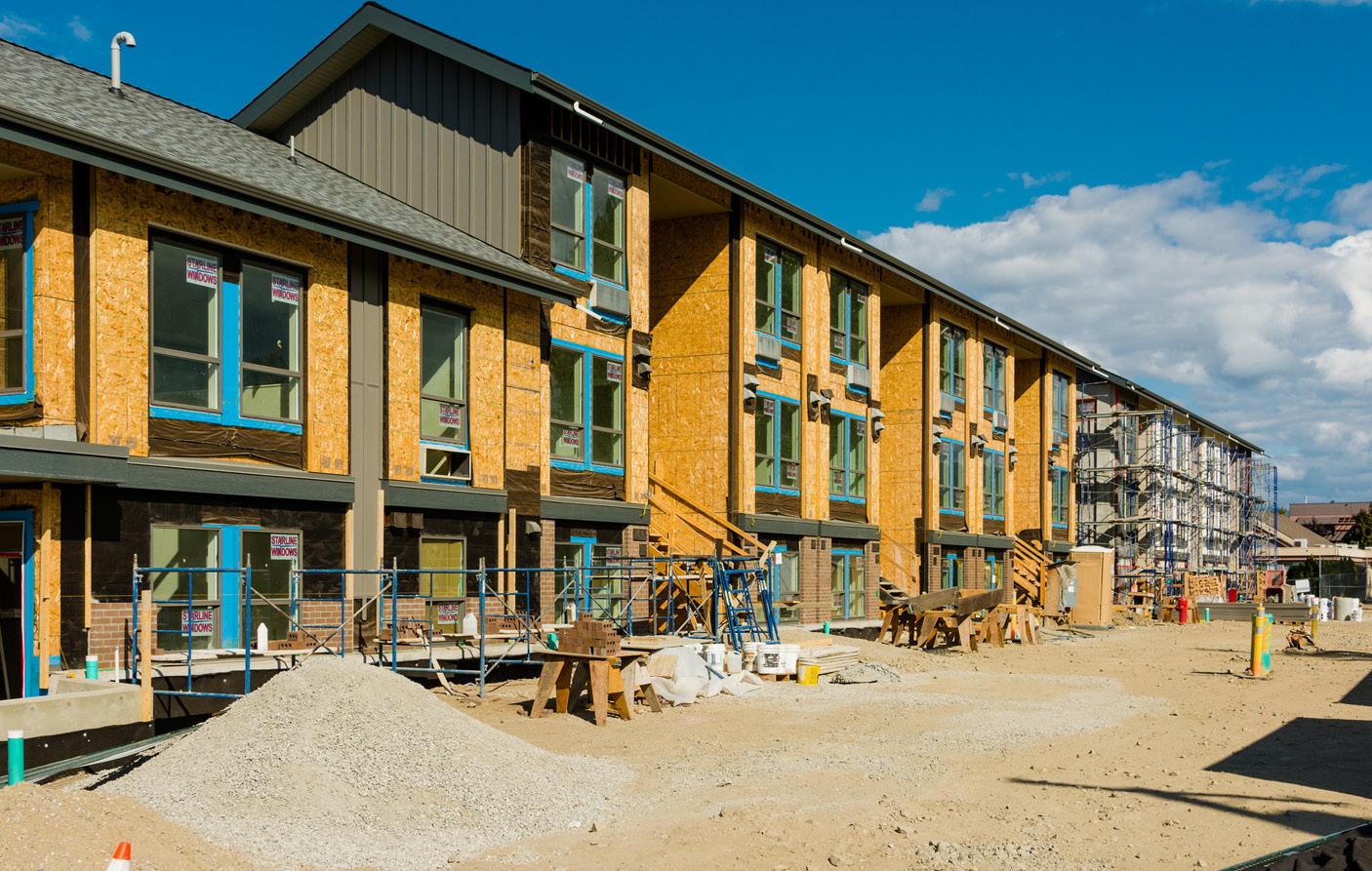
The latest update to the 20-Year Servicing Plan impacted DCC rates with the changes taking effect in February 2020. The DCC rates were updated to allow for the collection of DCCs to fund DCC eligible park development and linear park acquisition projects to the year 2030. This bylaw amendment will result in an additional $113 million of park infrastructure by 2030. This latest plan reflects a total program cost of $993 million. The funding for the program is 66 per cent from Development, 29 per cent from City funds, and 5 per cent from senior levels of government. Arterial Roads maintain the largest share of the program at $518 million; followed by Park Development and Land Acquisition at $278 million, Wastewater Treatment at $88 million, Water Distribution at $64 million, and Wastewater Trunks at $45 million.
Local governments are permitted to temporarily lend available money from one DCC reserve fund to another. The money, along with appropriate interest, must be returned to the original reserve fund. For 2020, a deficit in Water Sector B reserve fund was covered from Water Sector A, a deficit in the Wastewater Treatment reserve was covered by Water Sector A and Roads Sector A reserve fund, and a deficit in the Park Development reserve was covered from the Park Acquisition reserve.
municipal assist factor
The Local Government Act requires local governments to assist in the cost of growth-related infrastructure. The municipal assist factor is separate from costs allocated between growth and the existing users on the basis of benefit. The level of the assist, determined by City Council, reflects the community’s desire to encourage development by reducing the DCC rates by the level of assist adopted.
Principles and Strategies for Financial Strength and Stability have been adopted by Council establishing guidelines for how the City will acquire and manage a portfolio of financial and physical assets that meets the current and future needs of our community. The 10 financial management strategies are:
assets – new
Expenditures for new assets will be prioritized based on social, economic and environmental factors and life cycle cost implications. Emergent opportunities will be evaluated against existing priorities. Investment in new assets should follow the long-term capital plan. The decision-making process for new asset investment will be documented, transparent and clearly communicated to Council, staff and the community.
Parks Acquisition
$5.9 million – Parkland Acquisition at 2302 Abbott St.
Parks Development
$1.1 million – Rutland Centennial Park, Pandosy Waterfront Park and Ponds Community Park.
Roads
$2.1 million – Ethel Active Transportation Corridor (ATC), McCulloch Area Roads.
Water
$256k – South End Water Upgrades.
Wastewater Trunks and Treatment
$5.1 million – Gyro Force Main, Sewer debt, Swordy Sanitary upgrades, and Water Street Force Main.
Total 2021 program expenditures are projected at $27.5 million.
Parks Acquisition
$6.4 million – Parkland acquisition.
Parks Development
$9.7 million – Pandosy Waterfront Park, Mission Recreation – Softball Diamonds and Ballou Park.
Roads
$9.5 million – South Perimeter Road, Hollywood Road, Lakeshore Bridge at Bellevue Creek, Lakeshore Road and ATC, Houghton ATC, McCulloch Area Roads and Ethel ATC.
Water $776k – Poplar Point to Dilworth Mountain Transmission Upgrade, Offsite & Oversize Program, South End Water Upgrades and Skyline Pump Station Electrical Building Upgrades.
Wastewater Trunks and Treatment
$1.1 million – Guy Street Lift Station, Water Street Force Mains and Offsite & Oversize Program.
assets – renew
The City will invest in existing infrastructure renewal in accordance with the long-term capital plan. Funding for asset renewal will be balanced against service levels and risk tolerance. Life cycle costs should be managed through preventative maintenance and renewal strategies.
debt
General Fund debt servicing costs will be maintained at or below a targeted level of annual taxation demand. The City’s debt capacity will be preserved by limiting the use of debt to fund only one-time major capital projects. If possible and when beneficial, debt will be paid down earlier. Financing for less than a five-year term will be completed through internal financing. Impacts on overall City debt levels from “self-funded” cost centres and Funds will be reviewed and understood.
Developers will pay their fair share for growth-related infrastructure through DCCs and other tools. Where appropriate, other funding can be used to provide additional capacity over and above the current OCP horizon. Taxation – funded DCC’s through grant programs may be used to encourage economic development and community projects.
Grants will only be pursued for the City’s priority projects. Grant funding will not increase the scope of a project without Council endorsement. Annual project funding must be sufficient without conditional grants. Long-term financial planning will rely on unconditional grant opportunities only.
All services, including new services, must be aligned with the City’s priorities and reviewed regularly. The full financial cost of service and staff requirements will be understood by Council and administration. Future changes in operating costs, including personnel resourcing requirements, will be considered in long-term capital and financial planning. Ongoing operating activities will only be funded through taxes, fees and charges.
The City will pragmatically partner with other entities to deliver community services and amenities. The City will explore access to new sources of capital and revenue streams. The City will leverage existing assets to attract private sector involvement. The City will leverage the expertise of outside partners. Services from partnerships will be reviewed regularly to ensure the needs of the City continue to be met. The City supports organizations within the community that enhance the quality of life.
Property taxes will remain as stable as possible over time. Property taxes will be comparative with similar communities. Increases to property taxes will be balanced among assessment classes. Property tax information will be transparent and easy to understand. Property taxes will reflect the infrastructure, services and service levels that the community believes are important.
The purpose of each reserve will be documented and reviewed regularly. Ongoing operating requests will not be funded from reserves. Accumulated surplus will only be used as an emergency funding source.
*Waivers are for Affordable Rental Housing and are paid for through taxation.
The DCC program and bylaw were updated and approved by Council in February 2020 to include park development and linear park land acquisition.
On April 18, 2016 Council approved the 2030 Infrastructure Plan, which identifies all the City’s infrastructure investment needs for the next 15 years (2016 – 2030).
Everyone will pay a fair amount for the services they receive. Services will be reasonably accessible by all citizens. User fees will be transparent and easy to understand.
June 11, 2021
mayor basran and members of council, I am pleased to present the City of Kelowna’s 2020 Annual Financial Report for the year ended December 31, 2020. The purpose of this report is to publish the City of Kelowna’s Consolidated Financial Statements, Auditor’s Report and to provide an update on City services and projects, pursuant to Sections 98 and 167 of the Community Charter.
Preparation of the Consolidated Financial Statements is the responsibility of City Council and City of Kelowna management. These statements are prepared by City staff in accordance with Canadian public sector accounting standards. Management is also responsible for implementing and maintaining a system of internal controls for the safeguarding of assets and to provide reasonable assurance that reliable information is produced.
External auditors, Grant Thornton LLP, conducted an independent examination in accordance with Canadian auditing standards to express their opinion on the Consolidated Financial Statements. The City’s Audit Committee also reviewed the Consolidated Financial Statements to ensure they are comprehensive, reliable, and understandable. The City received a clear audit opinion.
Council’s Priorities for 2019 to 2022 guides how the City will acquire and manage a portfolio of financial and physical assets that meet the current and future needs of our community. The City continues to monitor and report financial health indicators as part of the annual financial reporting to the Audit Committee and Council. The financial indicators show that the City is well positioned to meet current financial obligations and has resiliency to navigate through the unprecedented challenges as seen in 2020 and beyond.
The ongoing COVID-19 pandemic is a health crisis not experienced in our recent history that has created complex challenges for families, businesses, and many other organizations in our community, including the City of Kelowna.
For the City, challenges included the unknown ability of citizens and businesses to pay their property taxes, anticipated revenue shortfalls due to public health order restrictions and travel advisories, and uncertainty around the availability of potential financial supports for municipalities. The City used reductions to the 2020 Financial Plan to keep overall taxation as low as possible while still maintaining the services required by the community and strong support from both citizens and businesses resulted in property tax collections on par with previous years. Decreased air travel, a period of free public transit,
the temporary closure and limited re-opening of recreational facilities and the loss of gaming revenues resulted in a 22% decrease in fees and charges revenues. A temporary change in investment strategy ensured adequate cash flows were available pending any announcements of financial support from other levels of government.
In late 2020; the City received $7.9 million in emergency financial assistance through the Government of Canada and Province of BC’s Safe Restart plan and the Kelowna Regional Transit System received a Safe Restart grant for $7.3 million of which the City’s portion was $5.9 million. The City was able to further minimize the impact of revenue losses by significantly reducing spending, a $10.1 million decrease in expenses over 2019 and by deferring non-essential capital projects, a decrease of $41.4 million in the acquisition of tangible capital assets compared to 2019.
The General Fund ended 2020 with an $8.9 million unappropriated surplus from operations with $8.5 million put into reserves and $0.4 million added to accumulated surplus. The general fund accumulated surplus balance of $4.8 million adheres to financial best practices and is to be used only for extraordinary events. The City ended the year with an increase to accumulated surplus, which now sits at $2.2 billion. The accumulated surplus is an indicator of the City’s overall financial viability and is equal to the sum of the net financial assets and non-financial assets representing resources (both financial and non-financial) that may be used to provide future services.
Despite the need for capital project deferrals, two significant projects were completed in 2020, the Water System Integration project, and the South End Water Upgrades. Infrastructure projects included the landfill liner design and construction and the Ethel 5 DCC along with land acquisitions of UBC West Campus, 2302 Abbot St, 1345 St Paul St, and the airport’s acquisition of 4130 Old Vernon Rd moving forward as planned.
The City’s Strong Financial principles and strategies are reflected in the 2020 financial results which have positioned the City to continue supporting the community as we overcome the ongoing challenges of the COVID-19 pandemic.
Respectfully submitted,
 – Genelle Davidson, CPA, CMA Divisional Director, Financial Services
– Genelle Davidson, CPA, CMA Divisional Director, Financial Services

As at December 31, 2020 (in thousands of dollars)
For the Year Ended December 31, 2020 (in thousands of dollars)
Contingent liabilities and Commitments (Notes 8 and 9)
See accompanying notes to the consolidated financial statements.
Davidson, CPA, CMA Divisional Director, Financial ServicesSee accompanying notes to the consolidated financial statements.
Colin Basran Mayor, City of KelownaFor the Year Ended December 31, 2020 (in thousands of dollars)
For the Year Ended December 31, 2020 (in thousands of dollars)
Net inflow (outflow) of cash and cash equivalents related to the following activities
See accompanying notes to the consolidated financial statements.
See accompanying notes to the consolidated financial statements.
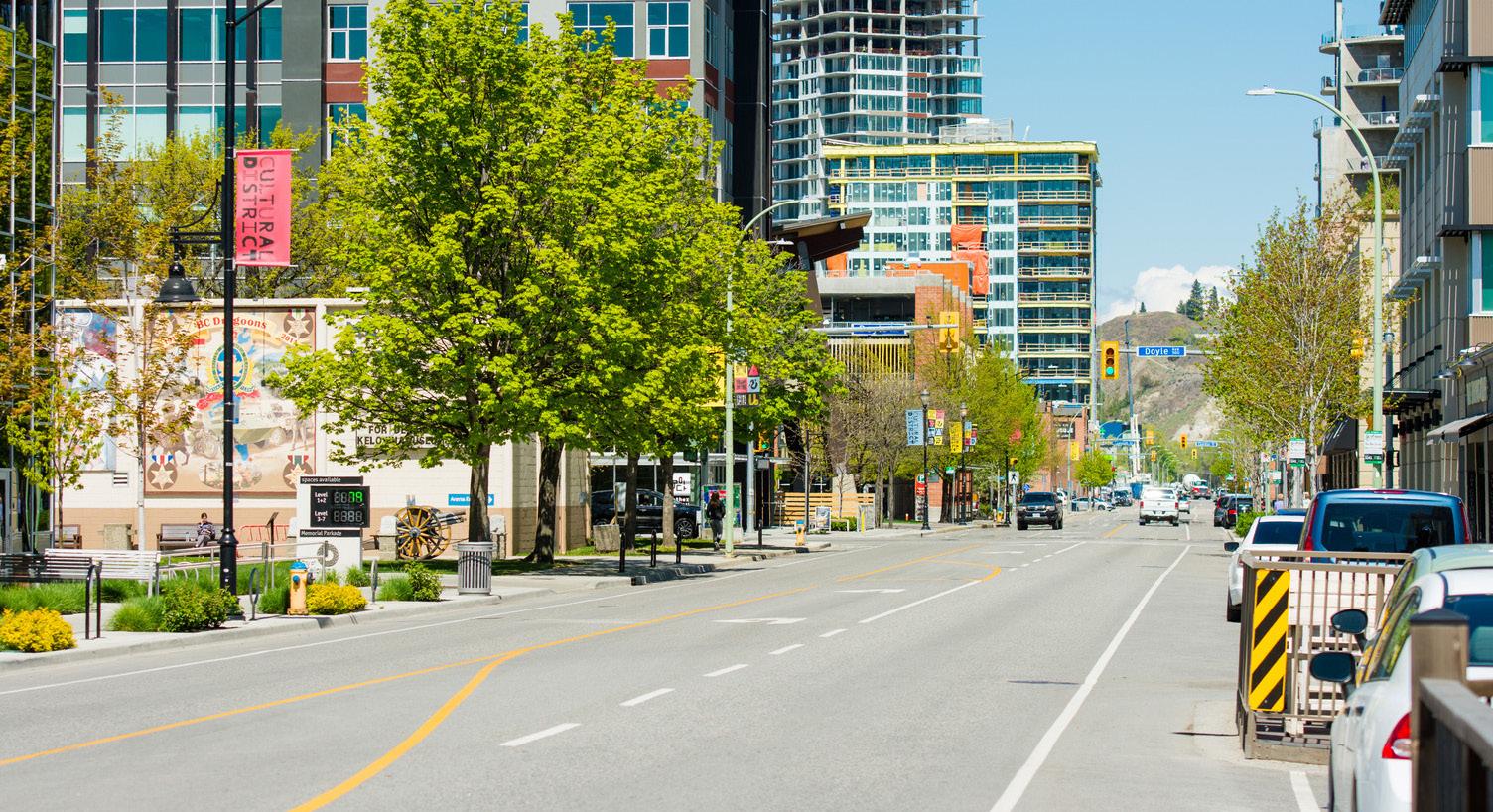
December 31, 2020
(all tabular amounts reported in 000’s of dollars)
The notes to the consolidated financial statements are an integral part of the statements. They explain the significant accounting and reporting policies and principles underlying these statements. They also provide relevant supplementary information and explanations which cannot be conveniently expressed in the consolidated financial statements.
The consolidated financial statements are the responsibility of and prepared by management in accordance with Canadian Public Sector Accounting Standards (PSAS). The preparation of these consolidated financial statements necessarily involves the use of estimates based on management’s judgment, particularly when transactions affecting the current accounting period cannot be finalized with certainty until future periods.
The City of Kelowna’s resources and operations are segregated into General, Airport, Wastewater Utility, Water Utility, Development Cost Charges and Statutory Reserve Funds for accounting and financial reporting purposes. The consolidated financial statements include all the accounts of these funds. All material interfund transactions and balances have been eliminated within the consolidated financial statements.
On March 11, 2020 the World Health Organization officially declared the COVID19 outbreak a pandemic. The pandemic has forced governments to implement extraordinary measures to slow the progress of infections and to stabilize disrupted economies and financial markets. The City has deployed initiatives in order to protect the health and safety of its employees, to support its customers, and mitigate the impact of the crisis while ensuring continuity of its activities. Although decreased flights and passenger volumes have significantly impacted the Airport, the impact to the rest of the City’s operations has not been as significant. As of this time, it is difficult to assess the impact of the City’s future results as it is dependent on the length and severity of the pandemic. Management will continue to monitor and assess the situation and respond accordingly.
The accrual method for reporting revenues and expenses has been used. Revenues are recognized in the period in which the transactions or events occur that give rise to the revenues. Expenses are recognized in the period in which the goods or services are acquired and a liability is incurred.
Assets held for sale are those expected to be sold within one year. They are valued at the lower of cost or expected net realizable value. Cost includes amounts for improvements to prepare the asset for sale.
Inventory
Inventory is valued at the lower of cost, determined principally on a weighted average and specific item basis, or replacement cost.
The City issues the majority of its debt instruments through the Municipal Finance Authority. As a condition of these borrowings, a portion of the debenture proceeds is withheld by the Municipal Finance Authority as a debt reserve fund. The City also executes demand notes in connection with each debenture whereby the City may be required to loan certain amounts to the Municipal Finance Authority. These demand notes are contingent in nature. The Debt Reserve and Demand Note balances are as follows:
2020 2019
Cash deposits held by MFA $ 1,812
The City of Kelowna’s pension plan follows the guidelines of the Municipal Pension Plan which is administered by the Province of British Columbia for all British Columbia municipalities. The City and its employees contribute to the Municipal Pension Plan (a jointly trusteed pension plan). The board of trustees, representing plan members and employers, is responsible for administering the plan, including investment of assets and administration of benefits. The plan is a multi- employer defined benefit pension plan.
Reserves for future expenditures are non-statutory reserves which represent an appropriation of surplus for specific purposes. Transfers to reserves for future expenditures include funds to finance incomplete projects and accumulations for specific purposes.
The use of these funds is restricted by the Community Charter and associated Municipal Bylaws. Statutory reserve funds are funded 100% by cash and portfolio investments.
Intangible assets include works of art and historic assets located throughout the City. They are not reflected in these consolidated financial statements.
The City of Kelowna only capitalizes interest on projects being financed internally which will require debenture borrowing upon completion. Interest is calculated on monthly expenditures at the bank prime rate less 2%.
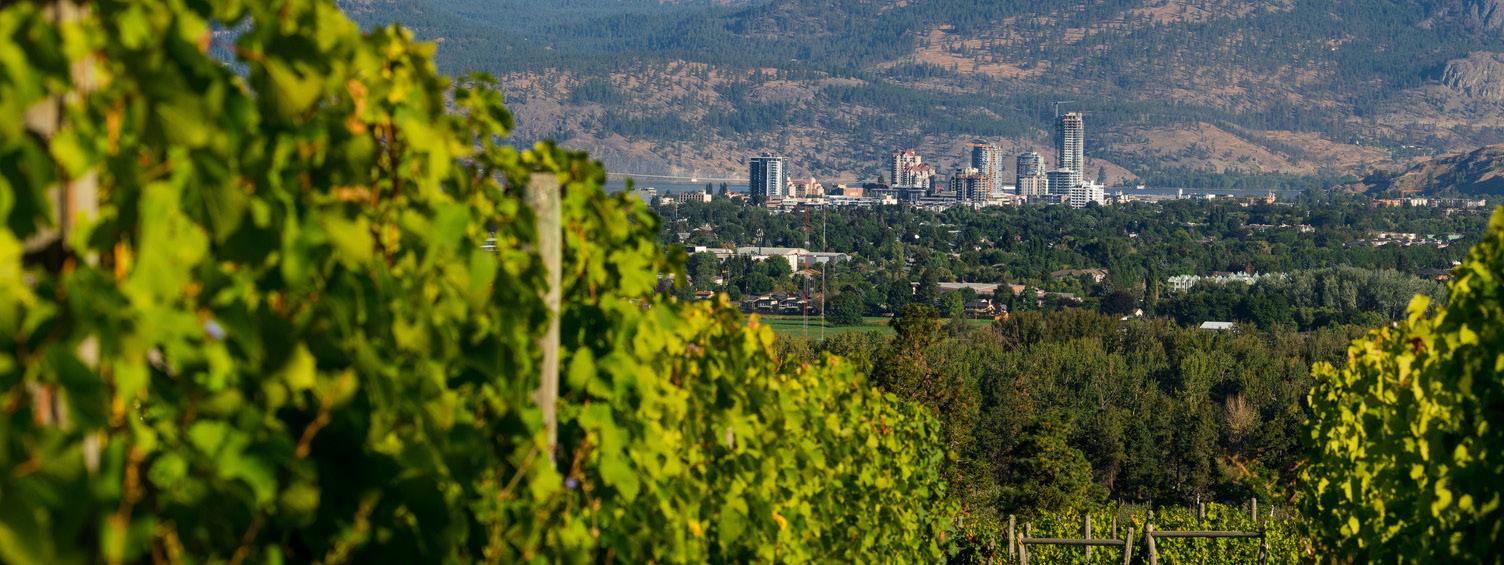
Work in progress represents capital projects under construction but not yet completed and are valued at cost.
The City records tangible capital assets, including assets held as work in progress or capital lease, at cost in the period they were acquired or when the asset is put into use.
All tangible capital assets are valued at cost which includes all costs directly attributable to acquisition, construction, development or betterment of the tangible capital asset.
Assets owned by the City but not paid for by the City including contributions, dedications, gifts and donations, are valued at fair value at the date of contribution, dedication, gift or donation, where fair value is reasonably determinable.
Tangible capital assets received as contributions are recorded at their fair market value.
Amortization
The cost less residual value of the tangible capital assets is amortized on a straight-line basis over the useful lives of the asset as follows:
Taxation revenue
Annual levies for non-optional municipal services and general administrative services are recorded as taxes for municipal purposes. Levies imposed by other taxing authorities are not included as taxes for municipal purposes. Taxes are recognized as revenue in the year they are levied.
Through the BC Assessment appeal process taxes may be adjusted by way of supplementary roll adjustments. The effect of these adjustments on taxes are recognized at the time they are awarded.
Fees and charges revenue
Charges for transportation, environmental health, building permits, water, wastewater, and airport are included in this category. These revenues are recorded on the accrual basis and recognized as earned which is usually when services are provided or facilities are utilized.
Development Cost Charges (DCC) contributions
Development Cost Charges (DCC) contributions are recognized as revenue during the period in which the related costs are incurred.
Government transfers
Government transfers are recognized as revenue in the period that the transfer is authorized, eligibility criteria, if any, has been met by the City, and a reasonable estimate of the amount to be received can be made.
Investment income
The City’s investments are disclosed in Note 3.
Investment income is recorded on the accrual basis and recognized when earned.
A portion of the City’s investments are invested in pooled funds of the Municipal Finance Authority of British Columbia. Earnings on these funds are allocated to the members from time to time based on the market value of the pool. The City recognizes only its share of the realized earnings of the pool. This revenue is recorded as investment income and the amount is added to the cost base of the investment.
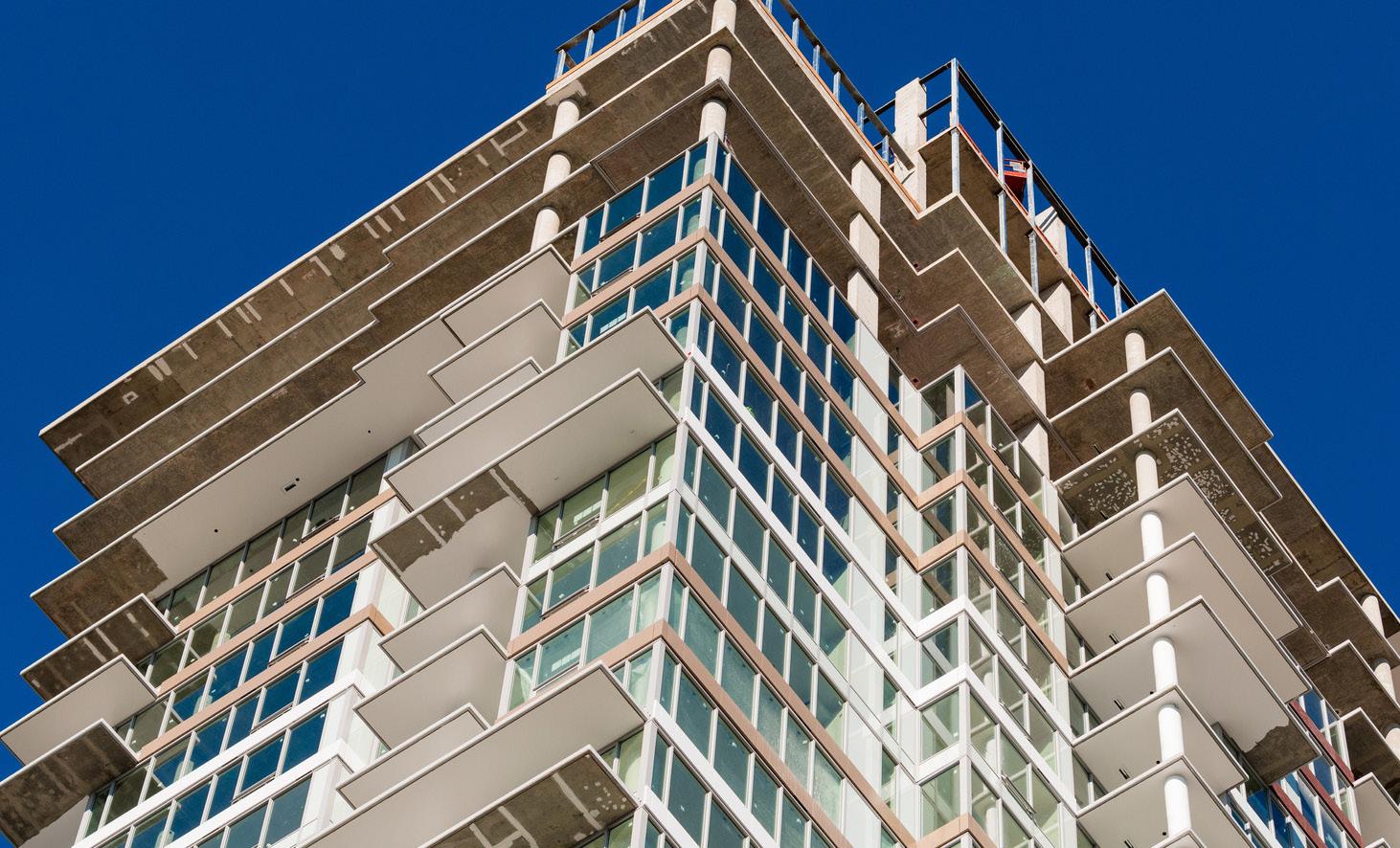
To the extent that investments have no stated rate of return, investment income is recognized as it is received.
Expenses
Expenses are recorded in the period in which the goods or services are acquired and a liability is incurred.
Contaminated sites are a result of contamination being introduced into air, soil, water or sediment of a chemical, organic or radioactive material or live organism that exceeds an environmental standard. The liability is recorded net of any expected recoveries. A liability for remediation of contaminated sites is recognized when a site is not in productive use and all of the following criteria are met:
• an environmental standard exists;
• contamination exceeds the environmental standard;
• the City is directly responsible; or accepts responsibility;
• it is expected that future economic benefits will be given up; and
• a reasonable estimate of the amount can be made.
The liability is recognized as management’s estimate of the cost of post-remediation including operation, maintenance and monitoring that are an integral part of the remediation strategy for a contaminated site.
In late 2019, the city acquired and accepted responsibility to remediate a site located on Harvey Avenue. In 2020, $118,674 was spent on cleanup activities, primarily consisting of soil delineation and groundwater monitoring. Further work of $35,282 was identified resulting in an increase to the liability and work will continue in 2021. A liability in the amount of $46,609 (2019 – $130,000) is based on contractor estimates of the work required to be undertaken, actual costs could be higher.
In early 2020 the city acquired and accepted responsibility to clean up contamination found at the site located at 1746 Water Street. Clean up activities took place in 2020 and further work will be undertaken in 2021 to remediate the site. This will consist of Groundwater and vapour monitoring and sampling, drilling investigation and monitoring to assess plume stability and seasonality. A liability in the amount of $170,000 is based on contractor estimates of the work required to be undertaken, actual costs could be higher.
The City’s liability of $216,609 (2019 - $130,000) for contaminated sites is included in Accounts payable.
Management has made estimates and assumptions that affect the amounts reported in preparing these financial statements. Actual results could differ from the estimates. Significant areas requiring the use of management estimates relate to the determination of tangible capital assets estimated useful life and related amortization, allowance for doubtful accounts, contaminated site liabilities, landfill post closure costs and settlement costs associated with outstanding legal actions.
PS 3280 Asset retirement obligations
This section revises and replaces the existing Section PS 3270 Solid Waste Landfill Closure and Post-Closure Liability. This section applies to fiscal years beginning on or after April 1, 2022, with early adoption permitted.
PS 3160 Public private partnerships
This section establishes standards on how to account for and report public private partnerships. This section applies to fiscal years beginning on or after April 1, 2023, with early adoption permitted.


PS 3400 Revenues
This section establishes standards on how to account for and report on revenue. This section applies to fiscal years beginning on or after April 1, 2023, with early adoption permitted.
PS 3450 Financial instruments
This section establishes standards for recognizing and measuring financial assets, financial liabilities and non-financial derivatives. This section applies to fiscal years beginning on or after April 1, 2022, with early adoption permitted. Adoption of this standard requires corresponding adoption of PS 1201 Financial Statement Presentation, PS 2601 Foreign Currency Translation and PS 3041 Portfolio Investments in the same fiscal period.
• PS 1201 Financial Statement Presentation
This section revises the general reporting principles and standards for the disclosure of information in the financial statements. This section applies to fiscal years beginning on or after April 1, 2022, with early adoption permitted.
• PS 2601 Foreign Currency Translation
This section revises and replaces the existing Section PS 2600 Foreign Currency Translation. This section applies to fiscal years beginning on or after April 1, 2022, with early adoption permitted.
• PS 3041 Portfolio investments
This section revises and replaces the existing Section PS 3040 Portfolio investments. This section applies to fiscal years beginning on or after April 1, 2022, with early adoption permitted.
Cash and cash equivalents
Cash and cash equivalents consist of cash and short-term investments with maturities of 90 days or less from the date of acquisition.
Accounts receivable are recorded net of allowance and are comprised of the following:
Portfolio
are recorded at cost and are comprised of the following:
The City has an operating line of credit with the Royal Bank of Canada for an authorized amount of $5.0 million, bearing interest at bank prime rate less 0.50%. At December 31, 2020 the balance outstanding was $nil (2019 – $nil).
Deferred revenue
The City records deferred revenue for funds received in advance of services not yet rendered and is recognized into revenue during the period in which the service is provided. The City also records deferred revenue when a contract specifies how the resources are to be used and therefore funds received in advance are deferred until the period in which the requirements are met. Because these funds are restricted in nature they are shown as a liability.
Deferred
The City collects development cost charges to pay for a proportionate share of infrastructure related to new growth. In accordance with the Local Government Act, these funds must be deposited into a separate reserve fund. Because these funds are externally restricted in nature they are shown as a liability.

Long term debt
Sinking fund installments and mortgage payments on net outstanding debt and loans payable over the next five years and thereafter are as follows:
provides a break down of tangible capital assets and work in progress. During the
with a cost of $82,082
were
off due to impairment.
Total outstanding debt issued was $166.0 million and total debt payable at December 31, 2020 was $92.7 million (2019 – $105.6 million).
Schedule 3 provides a breakdown of long term debt.
5. accumulated surplus

Surplus detail as follows:
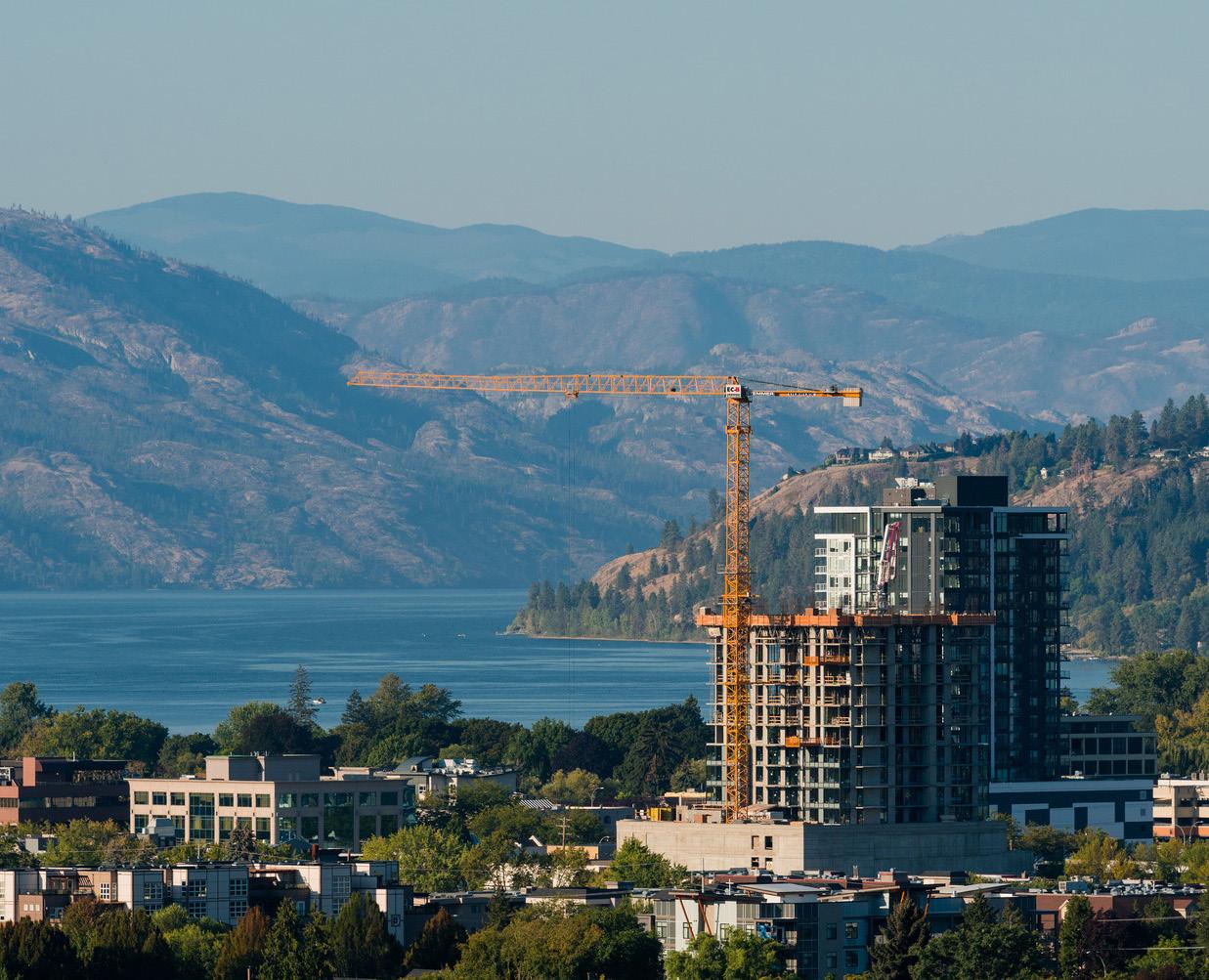
Taxation revenue comprises the following amounts raised less transfers to other governments:
Government transfers are the major source of transfers to the City. Government transfers received are for completed projects that meet the required criteria as set out by the Government body providing the funding. Government transfers do not include grants in lieu of taxes received from the Federal and Provincial governments. Due to the completion of projects in 2020 there are no deferred revenue balances related to these transfers. In 2020 the City received and recorded as revenue the following transfers:
The COVID-19 Safe Restart Grant was received from the Provincial Government in 2020 and is included above under Operating transfers, Provincial. The schedule below provides disclosure of funds received, spent and remaining for the year. A balance at the end of the year represents unused funds received and is included in the General fund reserve.

Regional District of Central Okanagan
Regional District debt is, under the provisions of the Local Government Act, a direct, joint and several liability of the District and each member municipality within the District including the City of Kelowna.
The loan agreements with the Regional District of Central Okanagan and the Municipal Finance Authority provide that if at any time the scheduled payments provided for in the agreements are not sufficient to meet the Authority’s obligation with respect to such borrowing, the resulting deficiency becomes a liability of the member municipalities.
The employer and its employees contribute to the Municipal Pension Plan (a jointly trusteed pension plan). The board of trustees, representing plan members and employers, is responsible for administering the plan, including investment of assets and administration of benefits. The plan is a multi-employer defined benefit pension plan. Basic pension benefits are based on a formula. As at December 31, 2019, the plan has about 213,000 active members and approximately 106,000 retired members. Active members include approximately 41,000 contributors from local governments.
Every three years, an actuarial valuation is performed to assess the financial position of the plan and adequacy of plan funding. The actuary determines an appropriate combined employer and member contribution rate to fund the plan. The actuary’s calculated contribution rate is based on the entry-age normal cost method, which produces the long-term rate of member and employer contributions sufficient to provide benefits for average future entrants to the plan. This rate may be adjusted for the amortization of any actuarial funding surplus and will be adjusted for the amortization of any unfunded actuarial liability
The most recent valuation for the Municipal Pension Plan as at December 31, 2018, indicated a $2,866 million funding surplus for basic pension benefits on a going concern basis.
The City of Kelowna paid $7.8 million (2019 - $7.5 million) for employer contributions while employees contributed $6.5 million (2019 – $6.3 million) to the plan in fiscal 2020.
The next valuation will be as at December 31, 2021, with results available in 2022.
Employers participating in the plan record their pension expense as the amount of employer contributions made during the fiscal year (defined contribution pension plan accounting). This is because the plan records accrued liabilities and accrued assets for the plan in aggregate, resulting in no consistent and reliable basis for allocating the obligation, assets and cost to individual employers participating in the plan.
The City of Kelowna does not accrue expenses for post-employment benefits and compensated absences. Post-employment benefits are benefits expected to be provided after employment but before retirement to employees and their beneficiaries. Compensated absences are benefits for employee absences for which employees will be paid (i.e. sick leave). City employees retiring do not receive any post-employment related benefits that either vests or accrues over the period of employment. Compensated absences: such as sick leave benefits do not accrue and are not vested. The City recognizes the expense for compensated absences when the event obligates the City to pay.
The City of Kelowna is currently engaged in certain legal actions, the outcome of which is not determinable at this time. Accordingly, no provision has been made in the accounts for these actions.
The amount of loss, if any, arising from these contingent liabilities will be recorded in the accounts in the period in which the loss is realized. The City of Kelowna has insurance policies and financial reserves to offset associated risks.
The City has entered into various agreements and contracts for services and construction with periods ranging from one to five years. The City has purchase orders open as at December 31, 2020 which have not been recorded in the accounts. The balance of these open purchase orders is not determinable at this time. The funding for the majority of these obligations has been set aside in reserves for future expenditures. These amounts will be recorded in the accounts in the period the goods and services, to which they relate, are received.
As required by PSAS and regulated by the Ministry of Environment & Climate Change Strategy, the City has agreed to obligations regarding the operation of the landfill site. These obligations include recognition of closure and post-closure liability. As currently engineered, and based on current waste disposal patterns, the landfill has a remaining life expectancy of 88 years. The estimated length of time needed for post-closure is 80 years.
The present value of future cash flows for the expected landfill closure and post-closure care costs is estimated to be $30.7 million based on a Design, Operations and Closure Plan (DOCP) completed in 2018.
The City’s liability for these landfill closure and post-closure care cost expenditures is recognized as the landfill site’s capacity is used. The reported liability of $4.3 million (2019 - $4.1 million) represents the portion of the estimated total expenditure recognized as at December 31, 2020. The remaining capacity of the landfill site is estimated at 27.0 million tonnes which is 90% of the site’s total capacity.
The liability and annual expenditure is calculated based on the ratio of current usage to the total capacity of the site and the discounted estimated future cash flows associated with closure and post-closure activities using an inflation rate of 0.96% and discount rate of 2.25%.
The reported liability is based on estimates and assumptions with respect to events extending over the remaining life of the landfill. Future events may result in significant changes to the estimated remaining useful life, estimated total costs, total or used capacity and the estimated liability. These would be recognized prospectively as a change in estimate when applicable.
The City has, under the terms of the partnering agreement between the City of Kelowna and YMCA of Okanagan Association, guaranteed repayment in the event that the YMCA of Okanagan Association defaults on a $1.8 million, 20-year loan issued in 2001. Under the agreement the City shall resume operation of the facility and assume responsibility for the repayment of the debt incurred by the YMCA of Okanagan Association. During 2010 an amendment was made to the agreement for additional financing of $700,000 for a 20-year term. Both loans have an interest rate of lender’s prime less 0.5%. As at December 31, 2020, the outstanding loan balance was $612,736 (2019 – $669,382). The City does not expect to make any payments on the guarantee and no amounts have been accrued in the financial statements.
The City of Kelowna, subject to the terms and conditions of the Tripartite Agreement between the City of Kelowna, Royal Bank of Canada and RG Arenas (Kelowna) Ltd., RG Properties Ltd., Prospero Canadian Land Investment Fund Ltd. group of companies, committed to the annual purchase of community use time at the Multi-Purpose Facility with the option to make a lump sum payment before the 15th day of one of year 6, 11, 16, 21 or 26, commencing with the year of substantial completion (November 10, 1999).
The City chose to exercise its option to make a lump sum payment of $6.7 million in 2019 (Year 21) as prepayment for community use time with no further amounts payable under the Tripartite Agreement until November 9, 2029.
The balance of $6.1 million in prepaid community use time is included in Prepaid expenses.
The Province of British Columbia and the Federal Government have an agreement with the Royal Canadian Mounted Police to provide police services for various municipalities in the Province, including the City of Kelowna. This agreement has a 20 year term expiring on March 31, 2032.
The investment in Kelowna Developments Ltd., a wholly owned subsidiary, is carried at its cost of $2. The company is inactive with no assets or liabilities and is being retained for potential future use.
The investment in preferred shares in RG Arenas (Kelowna) Ltd. is carried at its cost of $6.0 million. The shares were purchased under the terms of the Preferred Share Agreement between the City of Kelowna, RG Arenas (Kelowna) Ltd., RG Properties Ltd., and Prospero Canadian Land Investment Fund Ltd. and represents the City’s investment in the Multi- Purpose facility. The City has the option to purchase the Facility for the sum of $1 and the surrender of the preferred shares within the 10 year period beginning 30 years and one week from the date of Substantial Completion of the Facility, that being November 19, 2029. If exercised, the Facility will be conveyed to the City free and clear of all liens, charges and encumbrances.
In addition to the performance deposits reflected in cash balances, the City is holding irrevocable Letters of Credit in the amount of $50.0 million (2019 – $52.7 million) which were received from depositors to ensure their performance of works to be undertaken within the City. These amounts are not reflected in the financial statements but are available to satisfy any liabilities arising from non-performance by the depositors. Included in the $50.0 million, the City is holding irrevocable Letters of Credit in the amount of $6.2 million (2019 – $9.1 million) which are received from developers to ensure payment of development cost charges in future years.
In accordance with PSAS, trust funds are not included in the City’s consolidated financial statements. The City administers a Cemetery Maintenance Fund for the perpetual care and maintenance of the City owned and operated cemetery. As at December 31, 2020 the Trust Fund balance is $3.2 million (2019 – $3.0 million).
The City of Kelowna is connecting communities and providing a multitude of services to the citizens of Kelowna. The City’s operations and activities are organized and reported by funds and departments. The General Fund reports on operations, funded primarily by property taxes, which include services provided by the City such as general government, protective services, transportation services, recreation and cultural services, as well as public health, and environmental and development services. The City also operates its own airport and City utilities comprised of the wastewater and water systems that are self-sustaining operations. Operating results reported by the following segments are included in Schedule 2.
General Government operations are primarily funded by property taxation and business tax revenues. The expenses within the department are for executive and legislative costs, general administration, and other general government areas such as community service grants and rental property operating costs within the municipality. The general revenue reported under the department includes revenues associated with taxation, business tax revenues and senior government payments in lieu of taxes. These revenues have not been apportioned to other departments supported by the General Fund.
Protective services are comprised of police services provided by the Royal Canadian Mounted Police, fire protection services, building inspection services and bylaw enforcement.
Police services include administration, crime investigation and prevention, traffic, prisoner custody and court liaison expenses.
The fire department is responsible for effective fire protection and public safety services to the City. This includes fire suppression and rescue, prevention and investigation, specialty rescue/first medical responses and fire safety inspections.
Transportation services are responsible for the delivery of municipal public works services related to the planning, development and maintenance of streets and roads, bridges, drainage systems, street lights, traffic lights and signals, parking lots and on-street parking, and public transit as well as maintenance of workshops, yards and other buildings. The mandate is to provide a safe, efficient, environmentally-sensitive and cost-effective transportation network.
Recreation and cultural services
Recreation and cultural services provide services related to recreation, leisure and culture including administration and program costs as well as grounds and building maintenance. Facilities managed within this area include parks and playgrounds, arenas, swimming pools, beaches, boat launches, stadiums as well as community and seniors centers. The H2O Adventure & Fitness Centre, Parkinson Recreation Centre, Kelowna Community Theatre, Kelowna Museum, Kelowna Library, Kelowna Art Gallery and the Rotary Centre for the Arts are some of the larger facilities included.
Other services (Public Health/Environmental/Development services)
Public health services are comprised of cemetery operations and maintenance, environmental and development services including community planning and zoning as well as landfill operations.
Airport services
The Airport, owned and operated by the City of Kelowna, provides quality airport services in a safe and cost effective manner in compliance with Federal regulations. The Airport is accounted for in its own fund.
Wastewater services
Kelowna’s sanitary sewer system collects, conveys, treats and disposes of domestic wastewater (derived from the home) and industrial wastewater (resulting from business use, manufacturing and processing). The system currently services approximately 70% of Kelowna’s population and continues to be extended to unserviced areas. Kelowna’s wastewater system has a treatment capacity of 72 million litres per day. Wastewater Utility is accounted for in its own fund.
Water services
The Water Utility is responsible for planning, designing, building, operating and maintaining the City’s Water Utility and is one of four water suppliers operating within Kelowna’s boundaries. The Water Utility is accounted for in its own fund.
Statutory reserves
Statutory Reserves include funds for parking, land and capital works, machinery and equipment.
14. expenses by object
Total consolidated expenses by object are itemized in Schedule 2 – Segmented information.
The budget figures are from the Annual Five-Year Financial Plan Bylaw adopted before May 15th of each year. Subsequent amendments have been made by Council to reflect changes in the budget as required by law. Amortization of tangible capital assets was not included in the budget. The table below shows the reconciliation between the approved budget and the budget presented in these consolidated financial statements.
The City of Kelowna contractual rights arise from rights to receive payments from lease agreements. During 2020, the City of Kelowna entered into a long term lease agreement with Rise Commercial Developments Inc to lease 350 Doyle Avenue commencing in 2021. The long term lease is for $7 million to be received over 80 years with an option to renew for an additional 19 years.
The City of Kelowna has contractual rights to receive the following amounts of lease revenue in the next 5 years.

Certain comparative figures have been reclassified to conform to the presentation format adopted in the current year
For the Year Ended December 31, 2020 (in thousands of dollars)

For the Year Ended December 31, 2020 (in thousands of dollars)

For the Year Ended December 31, 2019 (in thousands of dollars)

For the Year Ended December 31, 2020 (in thousands of dollars)
Long term debt – General Fund
Debenture Debt
For the Year Ended December 31, 2020 (in thousands of dollars)

Long term debt – Wastewater Fund Debenture Debt
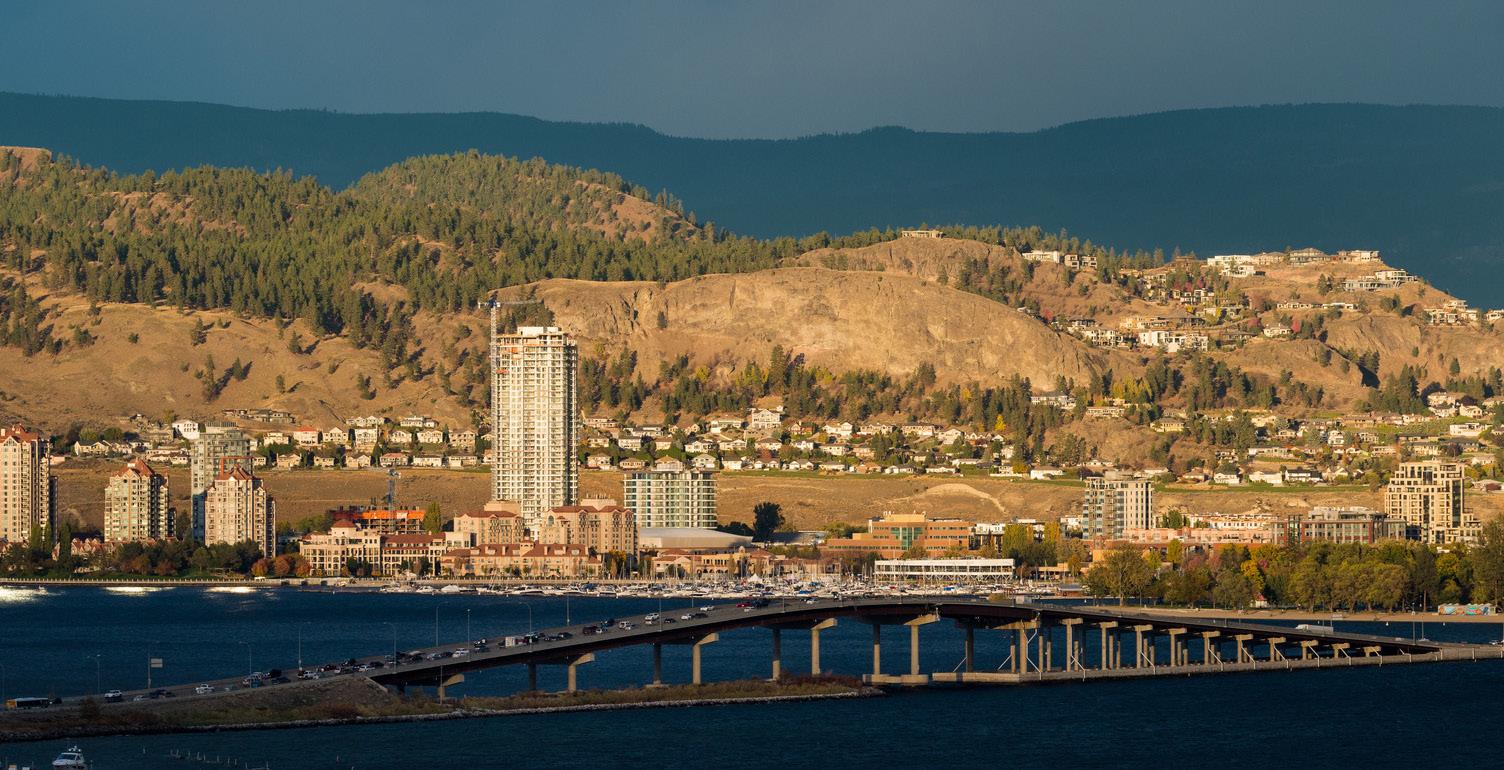
For the Year Ended December 31, 2020 (in thousands of dollars)
Long term debt – Water Fund

College, CEGEP or other non-university certificate or diploma
University certificate or degree
High school certificate or equivalent
Apprenticeship or trades certificate or diploma
No certificate, diploma or degree
University certificate or diploma below the bachelor level
Business, finance, admin (9,795)
Trades, transport (10,355)
Occupation
Labour force 15 years and over
Sales and service occupations (18,165)
Management occupations (7,785)
Social science, education, government service and religion (6,815)
Health occupations (5,700)
Natural and applied sciences (3,725)
Art, culture, recreation and sport (2,235) Processing, manufacturing and utilities (1,670)
Natural resources, agriculture and related production (1,420)
Note: Numbers and graphs on this page are updated from Census information available every 5 years. Except for the population graph which has the numbers updated each year from the figures available in kelowna.ca, ”About Kelowna.”
Note: the Regional District of the Central Okanagan includes City of West Kelowna, District of Peachland, District of Lake Country, and the Central Okanagan east and west electoral areas.
licenses
Source: City of Kelowna Development Services, City of Kelowna Business Licences system, Regional District of Central Okanagan